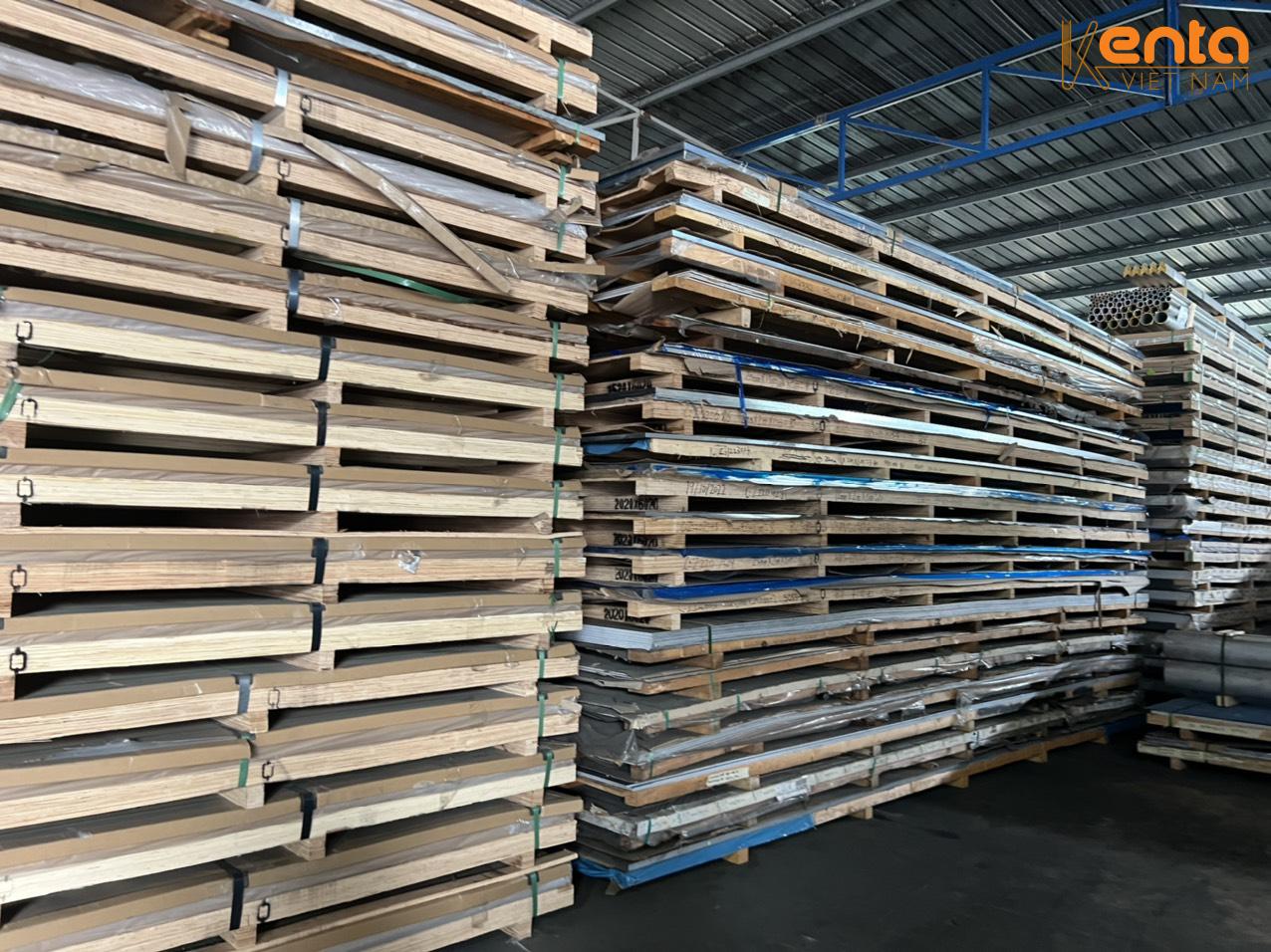Knowledge, Technology
7-STEP ALUMINUM RECYCLING PROCESS
Aluminum is a highly versatile material in life due to its lightness and durability. Aluminum is present in many aspects of life, which is why aluminum recycling is a matter of great concern to many people. Let's explore the Kenta VietNam find out in the following article!

7-step aluminum recycling process
What is aluminum? What are the properties of aluminum?
What is aluminum?
Aluminum, also known as Aluminium, is one of the most common metallic materials in the Earth's crust; it is denoted by Al and has an atomic number of 13. Aluminum is silvery-white, accounts for about 17% of the Earth's solid crust, and is a low-density metal. Pure aluminum is difficult to find in nature and is usually used in alloy form.
Aluminum material is currently widely applied in daily life, industries, construction, etc., due to its flexibility, ease of processing, and diverse bending and shaping capabilities.
Outstanding properties of aluminum material
It is a good conductor of electricity and heat, sound insulator, and has good bearing capacity.
It has high durability, sturdiness, safety, and performs well in harsh outdoor environmental conditions.
Lightweight, suitable for high-rise buildings, helping to reduce weight, increase durability, and extend the lifespan of the structure.
The specific gravity of aluminum material is low, g = 2.7g/cm3.
Non-magnetic, does not burn in ambient air at room temperature.
High shrinkage up to 6%, so its casting properties are not high.
Low melting point, making it easy for smelting, it is the easiest metal to recycle.
It is ductile, making it convenient for manufacturing products in the form of sheets, foils, strips, etc.
Its hardness and strength are quite low, so its utility value is not high, and it is easily damaged after a long period of use.
It has the ability to reflect heat and light, and is waterproof, so it is widely used in food packaging.
What is aluminum? What are the properties of aluminum?
What is aluminum recycling? Why is aluminum recycling necessary?
What is aluminum recycling?
Aluminum recycling is the process of recovering aluminum from used products, recycling it into raw aluminum or new aluminum products without having to mine aluminum from bauxite ore. This is a very important process in reducing environmental impact and saving energy, as aluminum can be recycled many times without losing quality.
Why aluminum needs to be recycled
Aluminum is a soft, pliable material that is easily bent, so it is widely used in various aspects of life. Utilizing and recycling used aluminum is essential, as it helps us maximize aluminum's efficiency and also contributes to fuel conservation.
Recycling aluminum offers many benefits such as:
- Energy saving:Recycling aluminum uses 95% less energy than producing aluminum from bauxite ore.
- Reduced environmental pollution:The aluminum recycling process reduces emissions and industrial waste, while also reducing the need for natural resource extraction.
- Cost savings:Using recycled aluminum helps reduce production costs, as the cost of extracting and processing new aluminum is very high.
Aluminum is a material that can be recycled indefinitely without losing its quality. Therefore, aluminum recycling plays an important role in protecting natural resources and minimizing environmental pollution.
What is aluminum recycling? Why is aluminum recycling necessary?
Aluminum recycling process
The aluminum recycling process is a series of steps that help reuse aluminum from used products, reduce the amount of new aluminum that needs to be extracted, and help protect the environment. The aluminum recycling process can be summarized through the following main steps:
1. Collection and sorting
- Collection:Used aluminum products (such as beverage cans, aluminum foil, aluminum casings, etc.) are collected from recovery points or recycling plants.
- Sorting:Collected aluminum must be sorted and separated from other materials (such as plastic, paper, iron, etc.) to avoid contamination during the recycling process.
2. Cleaning and purification
- Collected aluminum may contain impurities (grease, glue, or organic substances) and needs to be cleaned. Beverage cans, for example, need to be rinsed clean of any remaining liquids.
- This process may include washing with water, using mild detergents, or thermal methods (if necessary).
Aluminum recycling process
3. Crushing and shredding
- After cleaning, the aluminum is crushed or cut into small pieces for easy transport and processing in subsequent steps.
- Small aluminum pieces help reduce volume and are easily melted during the recycling process.
4. Melting (Aluminum smelting)
- Shredded aluminum is put into a furnace to melt. The temperature required to melt aluminum usually ranges from 660°C to 700°C.
- During this process, the aluminum is heated to a liquid state, which helps remove impurities and contaminants. Impurities often float to the surface and are removed through skimming.
5. Filtering and refining
- Once the aluminum has melted, it can be further filtered to remove any remaining impurities. This helps improve the quality of recycled aluminum.
- Additives can be added to enhance the quality or improve the properties of the aluminum.
6. Casting and shaping
- After the aluminum has been refined and purified, it will be recast into new raw material forms, such as aluminum bars, aluminum sheets, or other shapes suitable for their intended use.
- These aluminum bars will be cut to the required size and sent to manufacturing plants to be made into final products.
7. Quality control
- Finally, the recycled aluminum will undergo quality control to ensure that it meets the required standards for use. This includes checking the physical and chemical properties of the aluminum.
Learn more at Kenta VietNam to understand more about aluminum and other industrial materials.




















